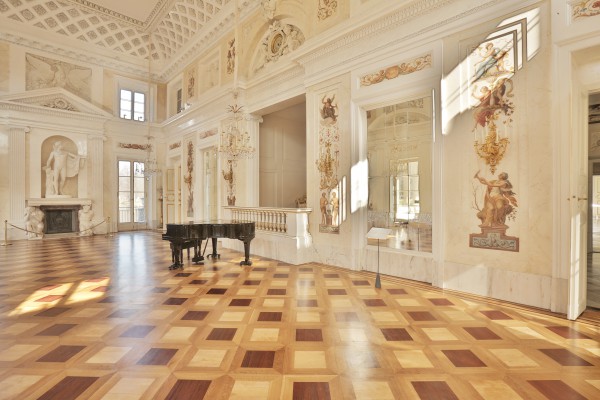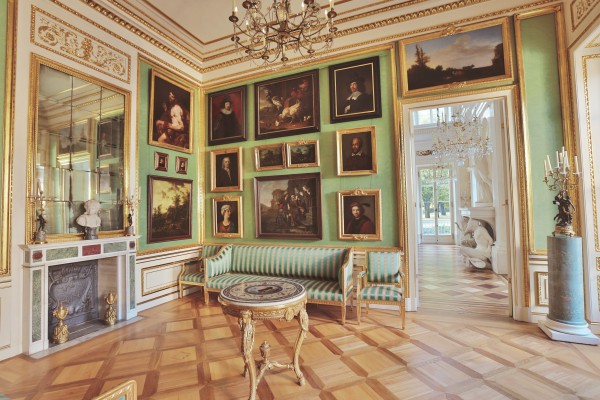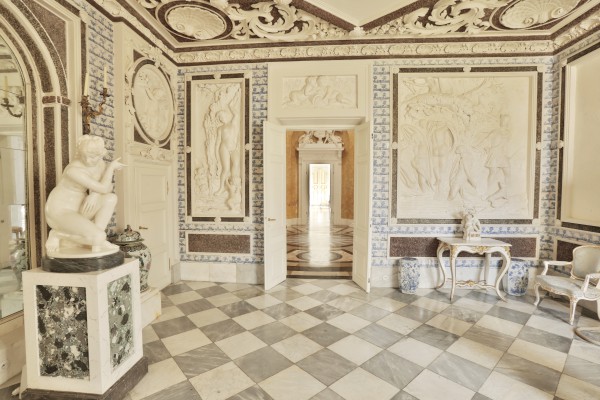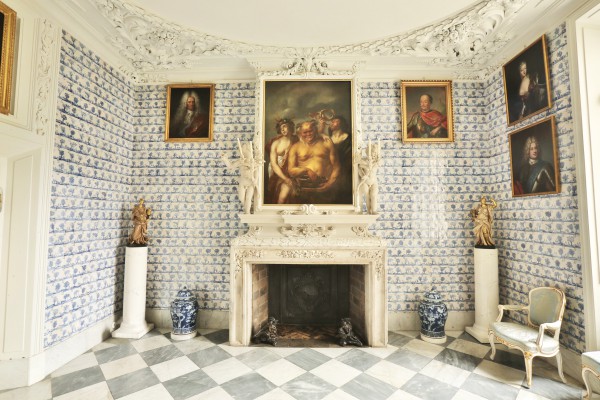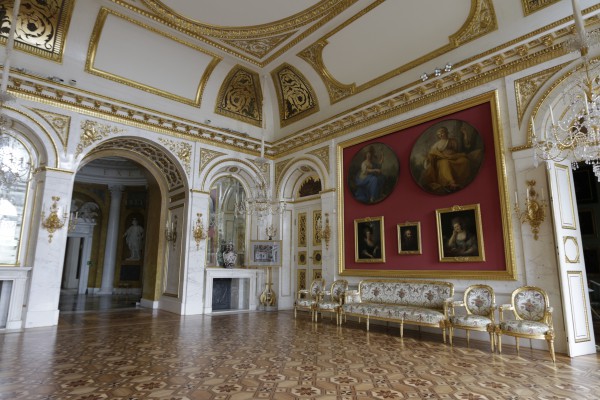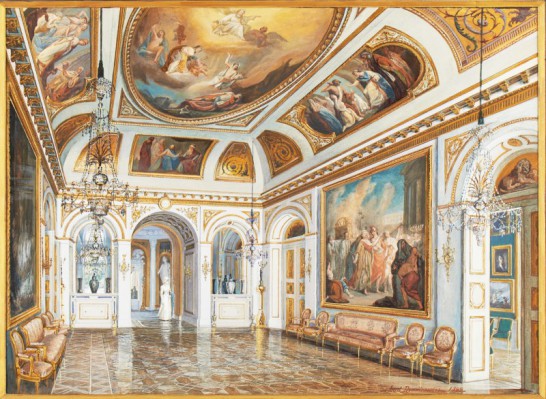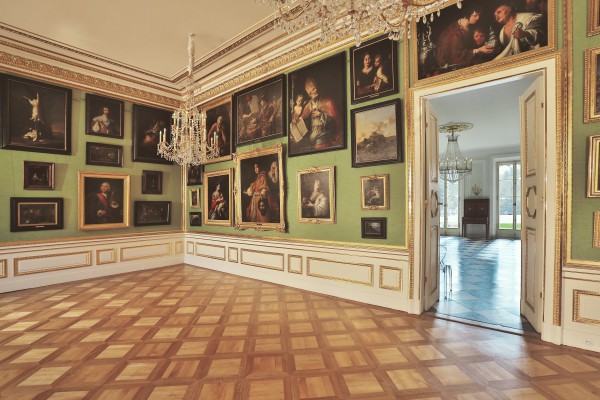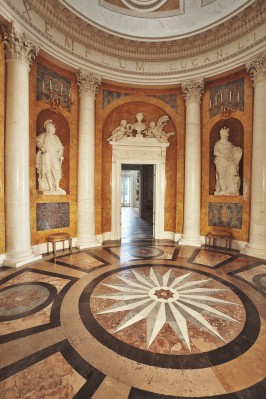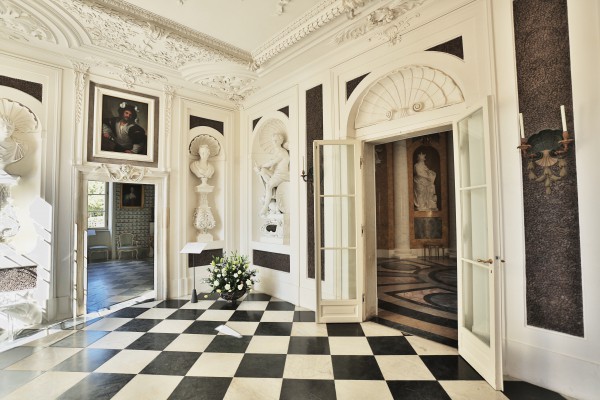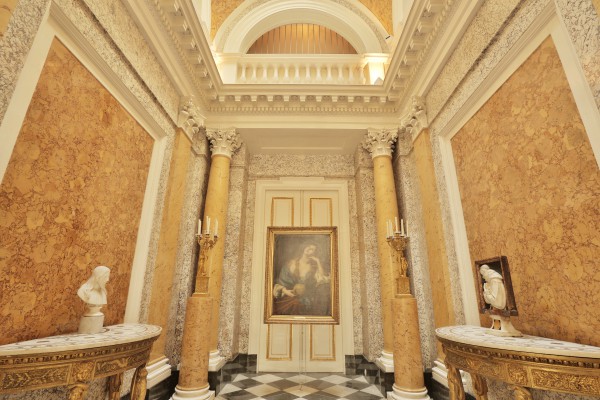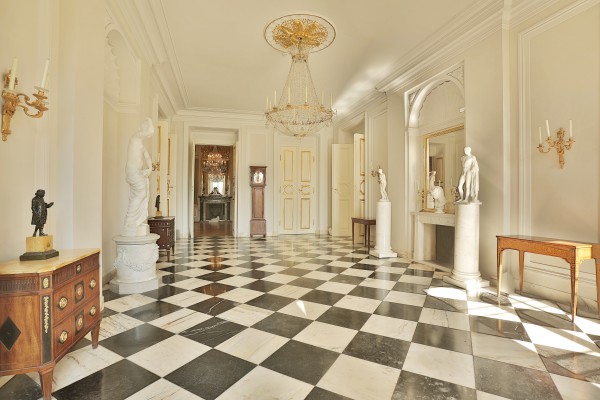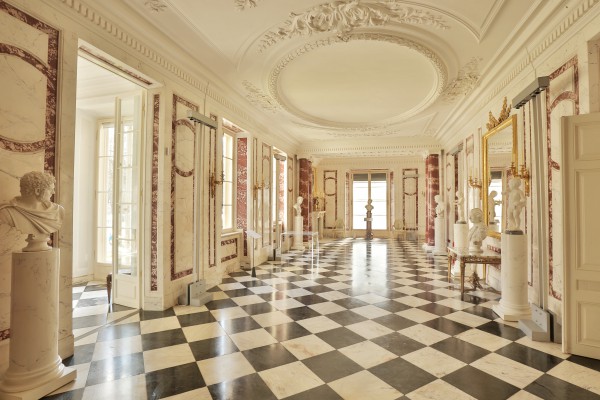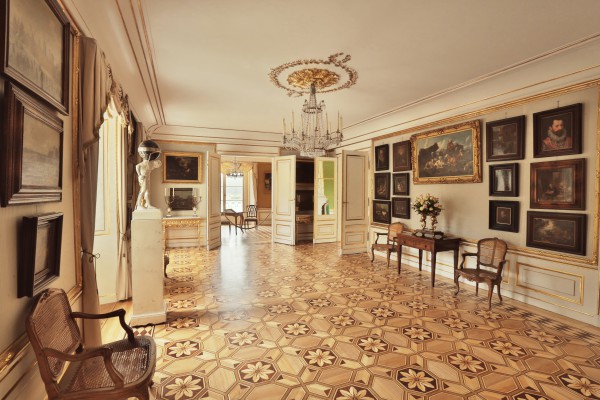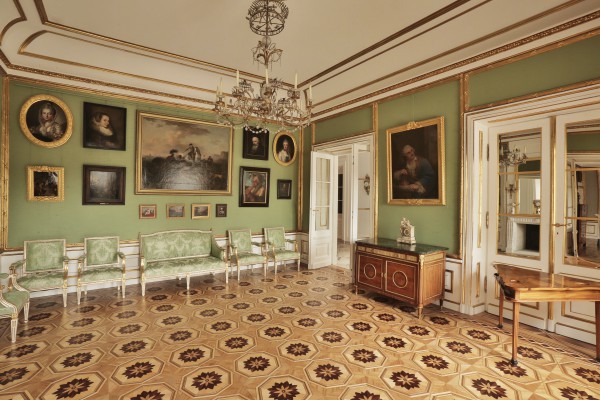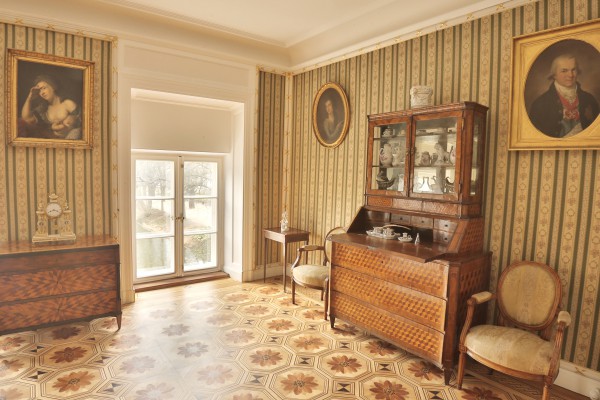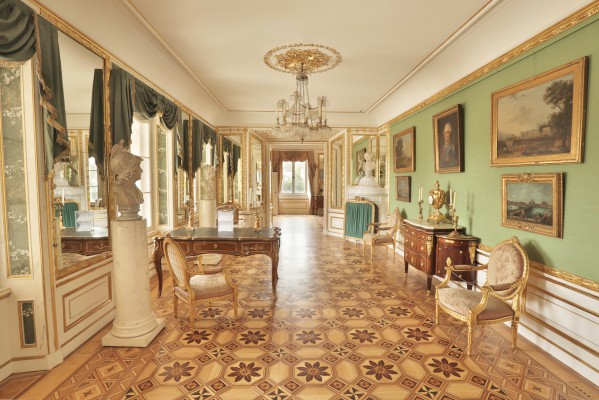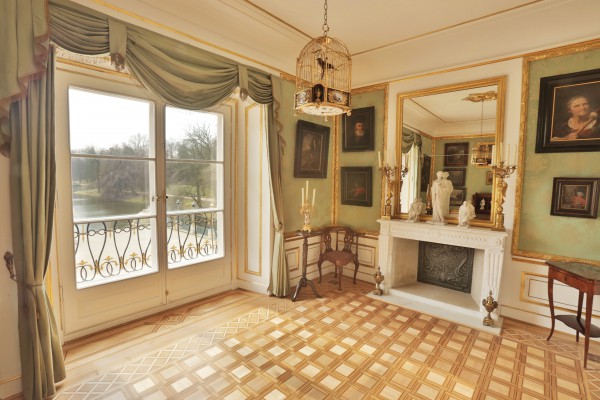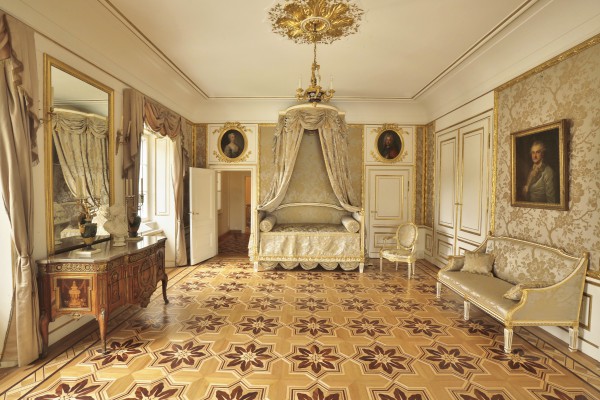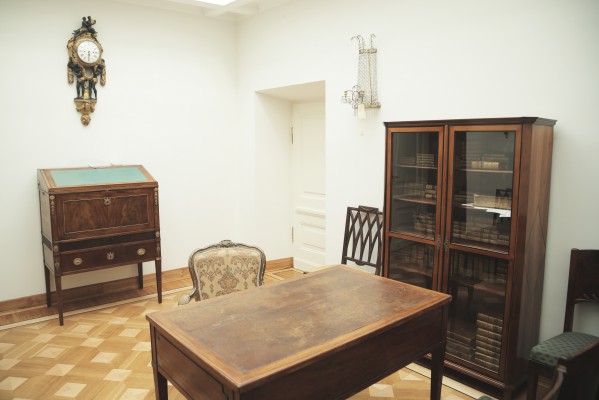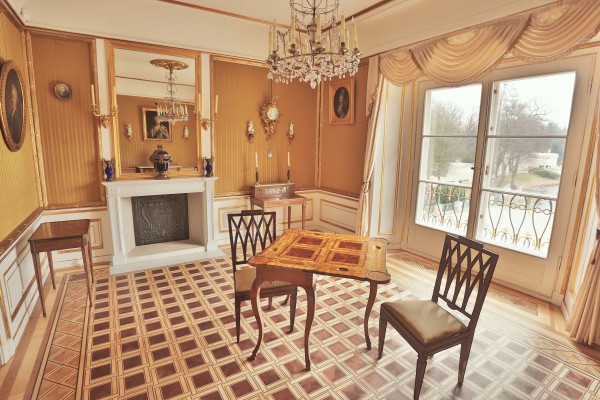
The King’s Study
The King’s Study – known in the period as the “Room of His Majesty” – is one of the oldest rooms on the first floor. It was located within the walls of the 17th century Bathhouse of Lubomirski. After the expansion of 1777, when the mansard rooms were made taller according to the design by Domenico Merlini, the apartment was given the current shape of a rectangle. It was then adapted to become the King’s work premises. Owing to the three large windows on the southern side, the study is perfectly illuminated. In addition, the windows offer a beautiful view of the Pond, the Amphitheatre and the garden. A rococo desk owned by Stanisław August stands near the central window. It seems that the King spent most of his time in this room. This is where he would read, reply to correspondence, develop his political programmes, and occupy himself with his favourite activities – studying prints, thinking of new iconographic themes for paintings and sculptures, and scheming the development and adornment of his residences. This is also where he used to spend time with other residents and closest acquaintances.
In the times of Stanisław August, the northern wall of the study was adorned with a painting depicting the panorama of Canton painted by Jan Bogumił Plersch (destroyed during World War II). It made the narrow interior optically larger. Views of China – often completely imaginary – as well as other elements were maintained in the chinoiserie style, which was popular throughout the 18th century and frequently used as decorations in kings’ studies in the period of the Enlightenment. Its popularity was connected with the way Europeans perceived the Chinese in the Enlightenment; they considered it a perfect country, inhabited by a sophisticated society, and governed by wise Mandarins. It was especially pertinent in the Age of Reason. Regardless of the political aspects, the chinoiserie style was valued because of its rich symbolic meanings – carried by oriental motifs painted with pastels, and evoking images of a peaceful land full of happiness and abundance. The intended goal was to fill the Study with a calm and thoughtful mood.
